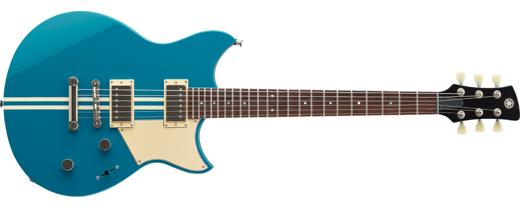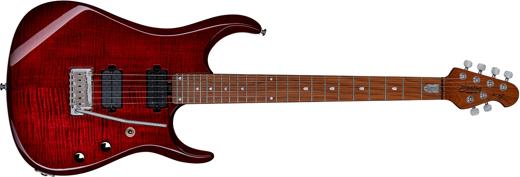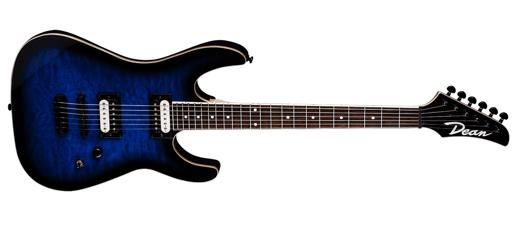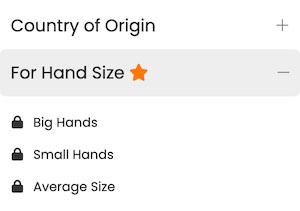Fender Custom Artisan Spalted Maple Thinline Stratocaster Review & Prices
- From Fender Custom's 2020 Artisan series
- Made in United States
- 6 strings
- 25.5"'' scale
- 9.5" to 12" Fretboard Radius
- Spalted Maple top
- Roasted Ash with Spalted Maple Top body
- 3A Roasted Birdseye Maple neck
- Round-Lam Ebony fretboard
- Bridge pickup: Fender Custom Shop Hand-Wound Fat '60s Single-Coil Strat (Single Coil/Passive)
- Middle pickup: Fender Custom Shop Hand-Wound RWRP Fat '60s Single-Coil Strat (Single Coil/Passive)
- Neck pickup: Fender Custom Shop Hand-Wound Fat '60s Single-Coil Strat (Single Coil/Passive)
- 1 volume and 2 tone Bell knobs
- 5-way Switch
- Custom Shop Vintage Synchronized Tremolo bridge
- '60s Oval C Bolt-On neck
- 21 Narrow Tall frets
- Vintage Style with Tortoise Shell Buttons tuners
- Compare Specs >
Our Scores and Tone Evaluation
- Heavy Metal
- Hard Rock
- Jazz
- Blues
- Funk
- Country
Fender Custom Artisan Spalted Maple Thinline Stratocaster
- Made in United States
- Expensive Wood
- Bone Nut
- Top Brand Pickups
- Tremolo
- Compound Radius Fretboard
- Cheap Fret Wire (NS)
- No Locking Tuners
- No Neck-Through Build
- No Push Knob or Extra Switch Option
- No Luminescent Inlay
- No 21:1 Tuner Ratio
- No Strap Lock
Price Overview
Its average competitor's price is $3120, which means that the Fender Custom Artisan Spalted Maple Thinline Stratocaster costs around 54% more than the competition. It might be due to it having additional features, but know that you can find cheaper similar alternatives. This takes into account all instruments of the same category in our database with 6 strings and Tremolo bridge that are made in United States.
Videos





Your feedback
Not all instruments are created equally. That's why it's important to have different opinions. Here's what our users who have played this instrument say. If you've played it before, help others by voting below!
Weight
VoteTuning stability
VoteNeck speed (thickness)
VoteNeck access to high frets
VoteNeck profile shape
VoteFret edges
VotePickups noise
VotePickups power
VoteExplore All From Fender Custom >
Is it Easy to Play?
The Fender Custom Artisan Spalted Maple Thinline Stratocaster meets 6 out of our 8 criteria items for beginner friendliness, which means that it's a good guitar to start with as a complete beginner. This takes into account the type of frets, scale length, nut width, bridge type, fretboard radius, and neck profile to determine the easiest combination for new players to get used to.
New Player Friendliness
Fender Custom Artisan Spalted Maple Thinline Stratocaster- Comfortable shape
- Easy-to-use bridge
- Comfortable fretboard
- Tall frets
- Narrow nut
- Comfortable neck
- Short scale
- Locking tuners
Hand Size Comfortability
After taking into account the neck profile, scale size, fretboard radius, and nut width, we can conclude that the Fender Custom Artisan Spalted Maple Thinline Stratocaster's construction favors people with relatively small hands.
Nevertheless, this comes down in the end to personal preference. Make sure you test this guitar—or another one with similar characteristics—before buying.
Scale Length
Scale length is the distance the strings will span between the bridge and the nut. It can tell you a lot about the overall playability and tone of the instrument. A longer scale length means longer distance between frets, brighter tone and more string tension—which means lower action, but more difficult bending of the strings.
Here's the Fender Custom Artisan Spalted Maple Thinline Stratocaster's 25.5" scale length compared to other common sizes:
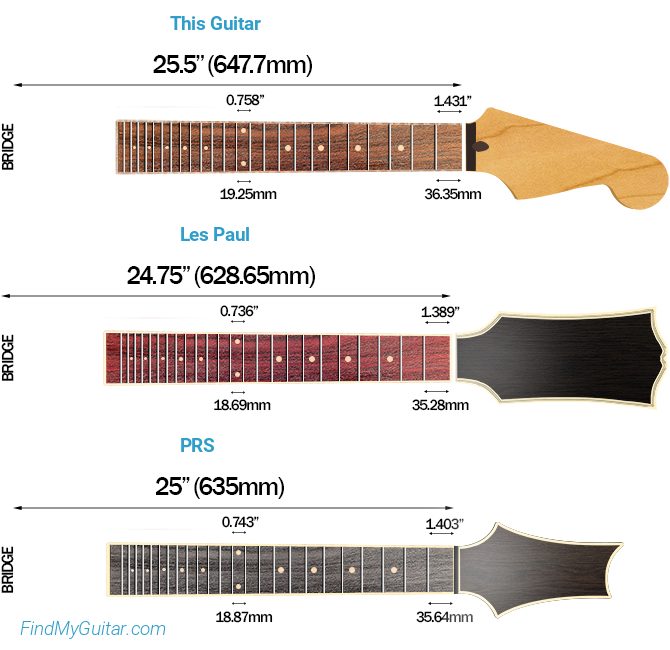
This is the same scale length used in Stratocaster guitars, and it's one of the main reasons they have such a bright sound. It's considered a long scale when compared to most non-baritone guitars.
Since the distance between bridge and nut is relatively long, you'll need to give the strings more tension to get them in tune. This higher tension will allow for a couple of things. First, you can get a lower action (get the strings closer to the fretboard) because the strings won't 'wiggle' too much when pluck and won't cause fret buzz. This can allow you to use lower tunings without increasing your string gauge, and it will make it easier to press down the strings fast.
However, the frets will also have a wider separation between each other, which can make it harder to play, especially if you got small hands. The higher tension will also make the strings feel stiffer, so bending will require more strength.
Neck Profile
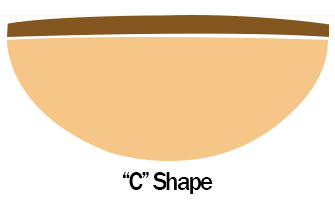
The neck profile tells you the thickness (neck depth) and shape in cross section. Every difference will completely change the feeling and comfortability of the neck. This is a highly subjective thing, but most players indeed prefer certain types of necks (like Cs and Ds) because they feel nice in most hands.
It has a C type neck. C-shaped necks like this have been the most popular for the last years. The reason is that they feel good in most hands. It's generally a thin neck that doesn't get in your way when playing fast, but that also has enough mass to give your hands a comfortable grip for chords if they aren't too big.
Thin necks like this make it easier to move your hand across the neck and it helps when playing fast solos, especially if you like to leave your thumb free while playing high on the fretboard. However, thinner necks are also weaker and will need adjustment more often than a thicker neck.
Fretboard Radius
When it comes to fingerboard radius, personal preference will dictate which one is better for you. However, most people seem to agree that a more curved (lower) radius will make it easier to play chords while a less curved (higher) radius is better for soloing and bending.
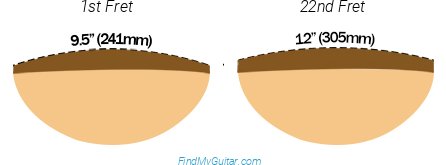
The Fender Custom Artisan Spalted Maple Thinline Stratocaster has a compound fingerboard radius of 9.5" to 12".
A compound radius is the best you can get because you'll get the best of both worlds. It starts curved at the nut, but it flattens as you get closer to the body. This means that you'll get great comfortability for chords on the first few frets, but also a flatter fretboard for playing solos without problems on the higher frets.
Playability compared to main competitors
Nut Width
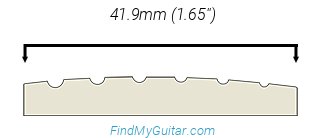
The Fender Custom Artisan Spalted Maple Thinline Stratocaster has a nut width of 41.9mm (1.65''). This is considered a narrow width for a 6-string guitar. This means that this guitar will have a narrower string separation at the nut, which will affect your fretting hand.
If you are a player with big hands, you might find it difficult to play chords without muting strings. However, this is good for players who have smaller hands, as it will allow them to reach each string more easily at the nut.
Frets
The Fender Custom Artisan Spalted Maple Thinline Stratocaster has 21 frets. Even though 24 frets has become really popular, there's still a good reason to get fewer frets; the pickup at the neck position will be further away from the bridge. This makes the neck pickup achieve a warmer tone. You might want this if you're playing Jazz or similar genres.
However, if you don't care about the warmer neck pickup, more frets will always be better. It's always nice to have the option to play higher notes if you want to.
It comes with nickel silver frets, so they won't last as long as stainless steel frets. If you use your instrument a lot, you might need to replace the frets after a few years. But this is unlikely as most people change instruments before this happens.
Fret Size

Finally, let's talk about fret size. Some people prefer tall frets because it's easier to press the strings and perform bends since there's less friction against the fretboard. On the other hand, some people like shorter frets because they like to touch the fretboard when playing, or because they got heavy hands and tend to press too much on the string and alter the of the note pitch accidently.
The Fender Custom Artisan Spalted Maple Thinline Stratocaster's frets are Narrow Tall size. These are similar to Jumbos, but they might be slightly shorter (or taller, depending on the maker), and they tend to have a narrower crown width. You'll be able to press the strings easily, but if you're not used to them, you might get the notes out of pitch if you press down too hard on the strings since their height won't let you feel the fretboard.
Playability Score
Tone Analysis
Wood will have little influence in the final tone of an electric guitar or bass. Instead, the hardware, especially the pickups, will be the most important thing to look at. Bur first, let's see the quality of the wood.
Wood
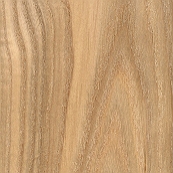
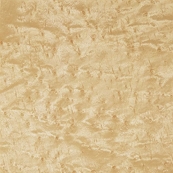

Ash Body: The most popular Ash wood for guitars is swamp Ash. It has a really light color with beautiful patterns, which makes it perfect for a natural-looking finish. It's not as lightweight as Alder, but also not as heavy as Mahogany. It's known for producing a bright tone with solid mids and lows.
Birdseye Maple Neck: This wood has beautiful patterns only found in specific types of maple.
Ebony Fretboard: This is one of the most expensive woods there is, which is why it's mostly used for fretboards. It is dense, heavy, highly resistant and comes in a really dark color that gives any guitar a classy touch. Tone wise, it helps the high side of the spectrum and provides good sustain.
Pickups
This guitar comes with pickups from one of the top brands: Fender Custom. So you can expect well built pickups with great sound that shouldn't need an upgrade anytime soon.
These are passive pickups, so you can expect a rounder sound and a moderade level of output.
The Fender Custom Artisan Spalted Maple Thinline Stratocaster's configuration is SSS. This is the pickup configuration made famous by the Stratocaster. It gives you beautiful clean tones, but also a vintage-sounding distortion. This pickup combination will sound chimey, but you might be surprised at the warmness that you can get from a single-coil at the neck position on a 22-fret guitar. The disadvantage of this configuration is the hum noise that single-coils produce due to their nature.
More with the same pickups
Versatility
It gives you a good amount of tone options with its 5-way switch. You can use it to choose at least 5 different pickup combinations.
Unfortunately, it doesn't come with more options for coil split or coil tapping. This makes it less versatile than some competitors.
Diagram

What music genre is it good for?
As a 6 strings, Semi-Hollow guitar with SSS configuration and Passive pickups, we'd recommend it for genres like Funk or similar. However, you can use almost any guitar for any genre. This is just the typical type of music for this particular one.
Sound Score
Build Quality Analysis
Country of Origin
Knowing where the instrument is produced is a good way to know how well it's built. Some manufacturing countries are known for having higher quality standards. For example, most expensive instruments are made in the US or Japan, but there are some exceptionally great countries—like South Korea—that are building a good reputation.
The Fender Custom Artisan Spalted Maple Thinline Stratocaster is made in United States. Guitars made in the USA have the reputation of being the best instruments you can get. This statement isn't as accurate as a few years ago, but you should still expect top-quality from a guitar made in this country.
Bridge
Custom Shop Vintage Synchronized Tremolo: This type of bridge allows you to change the pitch of the notes by pulling the bridge with the attached bar, which gives you better versatility. Also, since the bridge is not fixed to the guitar body, the bridge will move as you bend the strings. So you'll have to increase the distance of your bends to reach the same tension (note) compared to a fixed bridge. This allows you to perform smoother bends but will also make you slower. Finally, remember that this type of bridge requires a bit more maintenance than fixed ones, especially when changing strings.
Nut Material
Another important thing to analyze is the nut material, as it's one of the most important aspects that can affect the sound and playability of your guitar. A well-cut nut will make sure it stays in tune and will make it more comfortable to play.
In this case, the Fender Custom Artisan Spalted Maple Thinline Stratocaster has a Bone nut. This material is one of the highest quality you can get. It provides excellent sustain and tune stability if cut well. The only disadvantage is that it's an organic material, so it's not consistent. Two different bone nuts, even if made from the same bone, will probably sound slightly different. However, bear in mind that this is only relevant when playing open strings.
Neck Joint
The neck joint is the part where the neck of the guitar meets the body. There are three main techniques to attach both parts together: Set-In, Bolt-On and Neck-Through. The latter two provide different advantages, although neck-throughs are the most expensive.
This guitar has a Bolt-On neck joint. Even though this type of neck was looked down upon for a long time, nowadays bolt-on necks are well built and provide just as much sustain as any other join method. First of all, it's cheap to make because it consists of simply 4 bolts that attach the neck to the body. And you can travel with the guitar more easily, swap out the neck if you damage it, or upgrade to a more comfortable neck later on.
Build Quality Score
All Specs
Fender Custom Artisan Spalted Maple Thinline StratocasterUser Reviews
Help others by sharing your opinion about this guitar. Note: to avoid spam, your review will be submitted for approval before appearing here.
